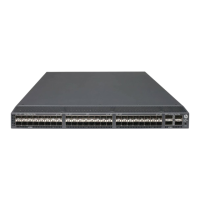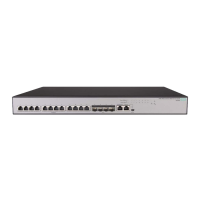2
Usage guidelines
This function enables a device to log ARP events when ARP cannot resolve IP addresses correctly.
The device can log the following ARP events:
On a proxy ARP-disabled interface, the target IP address of a received ARP packet is not one of
the following IP addresses:
The IP address of the receiving interface.
The virtual IP address of the VRRP group.
The public address after NAT.
The sender IP address of a received ARP reply conflicts with one of the following IP addresses:
The IP address of the receiving interface.
The virtual IP address of the VRRP group.
The public address after NAT.
The device sends ARP log messages to the information center. You can use the info-center source
command to specify the log output rules for the information center. For more information about
information center, see Network Management and Monitoring Configuration Guide.
The device can generate a large amount of ARP logs. To conserve system resources, enable ARP
logging only when you are troubleshooting or debugging ARP events.
Examples
# Enable ARP logging.
<Sysname> system-view
[Sysname] arp check log enable
arp max-learning-num
Use arp max-learning-num to set the maximum number of dynamic ARP entries that an interface
can learn.
Use undo arp max-learning-num to restore the default.
Syntax
arp max-learning-num number
undo arp max-learning-num
Default
An interface can learn a maximum of 16384 dynamic ARP entries.
Views
Layer 2 Ethernet interface view, Layer 3 Ethernet interface view, Layer 3 Ethernet subinterface view,
VLAN interface view, Layer 2 aggregate interface view, Layer 3 aggregate interface view, Layer 3
aggregate subinterface view, S-channel interface view, S-channel aggregate interface view
Predefined user roles
network-admin
Parameters
number: Specifies the maximum number of dynamic ARP entries for an interface. The value range is
0 to 16384.

